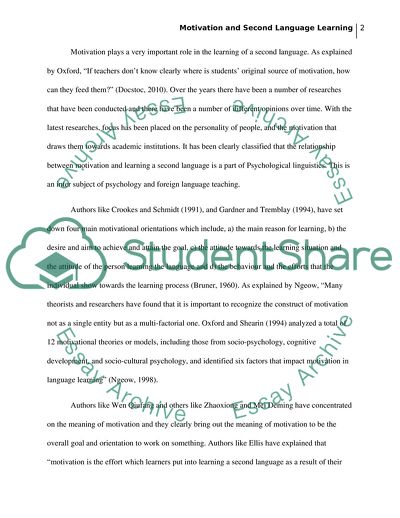Cite this document
(Motivation and Second Language Learning Literature review, n.d.)
Motivation and Second Language Learning Literature review. Retrieved from https://studentshare.org/psychology/1740703-motivation-is-considered-by-many-to-be-the-most-powerful-agent-in-the-learning-of-a-second-language-discuss
Motivation and Second Language Learning Literature review. Retrieved from https://studentshare.org/psychology/1740703-motivation-is-considered-by-many-to-be-the-most-powerful-agent-in-the-learning-of-a-second-language-discuss
(Motivation and Second Language Learning Literature Review)
Motivation and Second Language Learning Literature Review. https://studentshare.org/psychology/1740703-motivation-is-considered-by-many-to-be-the-most-powerful-agent-in-the-learning-of-a-second-language-discuss.
Motivation and Second Language Learning Literature Review. https://studentshare.org/psychology/1740703-motivation-is-considered-by-many-to-be-the-most-powerful-agent-in-the-learning-of-a-second-language-discuss.
“Motivation and Second Language Learning Literature Review”. https://studentshare.org/psychology/1740703-motivation-is-considered-by-many-to-be-the-most-powerful-agent-in-the-learning-of-a-second-language-discuss.


